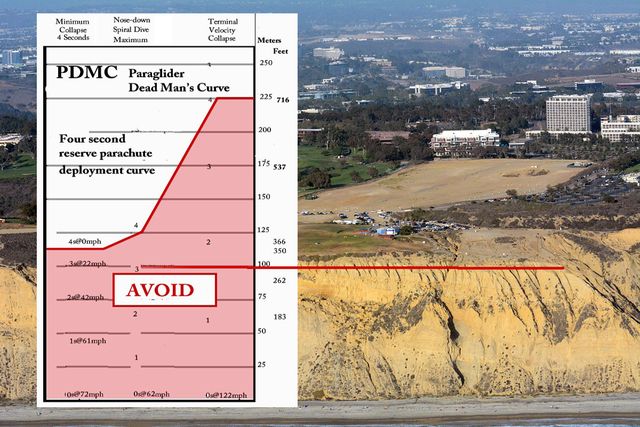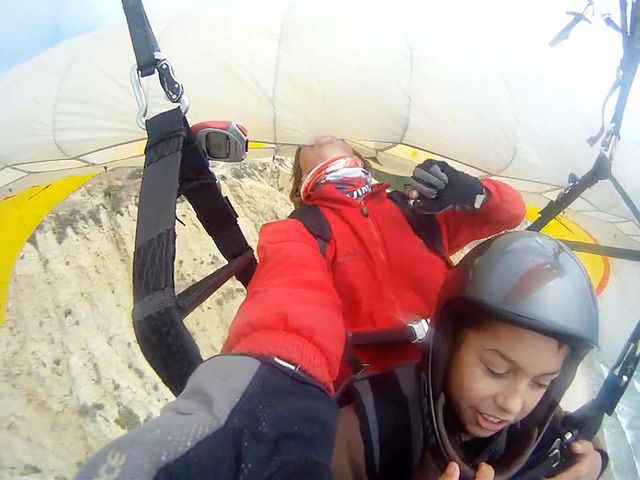miraclepieco wrote:Rick lost someone dear to him in a PG collapse.
No. And I don't see why that should be necessary. I've never hung out with idiots who think they're immortal and that aerodynamics don't matter. Not my crowd.
Geoff Lyons was, however, a very good hang glider pilot and a very good friend of mine. I was saddened to learn of his death, which was clearly, as far as I understand, pilot error (in a sailplane), so it was part of the game - the game real pilots like Geoff and myself played for years.
Geoff was always a better pilot than me, which gave me all the more satisfaction when I flew over him at some ridiculously high AGL [10,000 feet?], gained by working a somewhat intimidating, tornadic dust devil north of the Candelaria Hills, as he stood cursing at the base of the Gabbs range east of Mina with a group of his fellow hot shots on one fine hot summer's day in the middle 1980s. The hot shots' trick was to fly fast and low, and while the best could frequently pull it off, that was often where the rest ended up. Me, I directed but never flew comps. I always tried to gain maximum altitude and float in the upper-level westerly winds that crossed the Sierra.
When my friends died fighting, it made me sad but it was something we all understood. We could accept it. It was the game we played.
But we could never accept what most of the so-called pilots of today seem to accept, a "glider" just folding up like a bedsheet and falling out of the sky, killing the foolish screaming person tied to it. That would have been unthinkable. Yes, it was before PG but we would certainly have thought that an idiot just got killed and deserved it for being so incredibly stupid as to attempt to fly something without an airframe in turbulence. You see, that fool deliberately threw away his last chance to fight for his life, to use all his skill and knowledge to extract himself from whatever predicament he had gotten himself in. He threw it away by flying garbage. He died falling out of the sky under flapping laundry. He deserved it.
But every time someone who just wanted to experience the majesty of flight dies on a PG because they didn't understand the truth - that an airframe is a vital part of any winged aircraft - that hurts me, because I die a little bit, too. I know what happened, to the tiniest detail. It cut short an entire life. It could have been me. But it wasn't, because I'm not so stupid. Some of you call that level of honesty harsh. But it is actually death that is harsh. It is being maimed and living life in a wheelchair that is harsh. My opinion is just an opinion - and a warning.
However, it is also an opinion backed by facts. Since 2008, Cometclones.com listed every fatality I could find, every name, every place, every witness description, every serious injury in detail. Almost a thousand PG deaths in 10 years and countless broken backs and ruined lives placed on the Web for all to see! (Except for the big mouth imbecile Spork, who didn't bother to look.)
PG kills at near a 10 to 1 ratio to HG. Today's hang gliding pilots should be railing against PG, insisting PG fliers get safer wings. They should fear for their sport. Instead, it's live and let live, to the joy of the PG indu$try. You HG pilots have given away the organization we early pilots fought so hard to build - and you gave it away to thoughtless wannabe-pilot parachutists, for God's sake!. Now you no longer have a real say in anything but you act like you do. When a PG gets killed, you nod your heads and say what a tragedy but secretly you think it's what you'd expect but you don't say anything because the PG pilots might get mad at you. They might s*** on you and they are oh-so-ready to do it. What a bunch of pathetic pantywastes and quiet, gutless, acquiescing pu**ies most of you have become. You are killing HG.
 Home
Home



